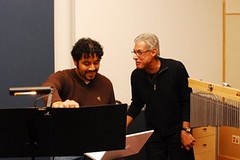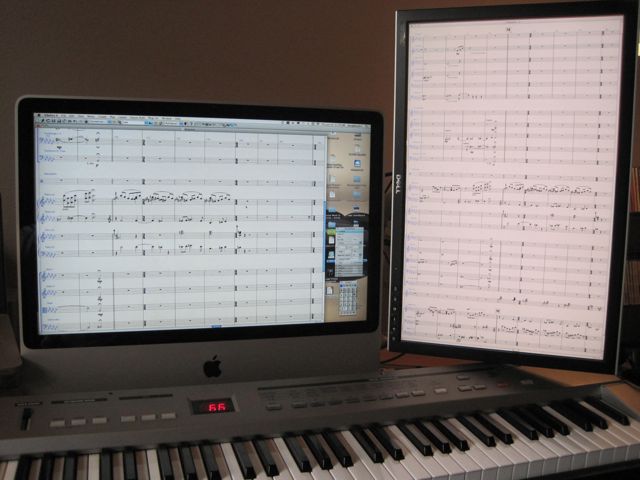
Arranging
Vision
Artful arranging is something of a lost art these days - in my experience, a lot of folks tend to rush the process of careful planning and orchestration of a piece of music. Most of the time, parts are scrawled out the night before a recording or a big performance in order to somehow use those horns that should be used. Or, lead sheets might be passed out on a session where musicians who may or may not necessarily have arranging experience are forced to make ad-hoc arrangements of harmonization, form and orchestration.
In my view, great arranging in and of itself is an art. It’s an art that I consider critical to my own artistic involvement. It’s something that I love to do and spend a considerable amount of creative time to accomplish. I consider the work of the great arrangers and orchestrators, Gil Evans, Nelson Riddle, Billy May, Ravel, Rimsky-Korsakov, Marty Paich and countless others tantamount to the work of the world’s great composers, and I continue to ardently study these greats to this day.
I arrange to get to know a piece of music better, whether it be a client’s, one of my own, or a historical piece of music. Though this exploration I get more “intimate”, artistically, with the composer of the music.
If you agree with the above and look forward to such an artistic collaboration, feel free to inquire here. It is my goal, as an arranger, to ensure that your creative musical vision is realized throughout and at the conclusion of the arrangement process.
Arranging Credits & Commissions
Eddie Palmieri, Mingus Big Band, Rosemary Clooney, Giovanni Hidago, Conrad Herwig, Herman Olivera, Honolulu Pops, Florida Orchestra, University of Washington, California State University, East Bay, California State University, Fresno, Mulit-Cultural Music Group NYC, Manhattan School of Music.
 Process
Process
Personal Meeting/Teleconference
- Get a feel the clients’ sonic vision, or what they are hearing “in their heads”
- Offer several suggestions on the piano, based on some of my musical experiences or what I might be hearing
Processing & Arranging
- After the meeting's conclusion, I take the materials and begin processing forms, auxiliary melodies and major sections to build to.
- Arranging work is started.
 Mockup & Delivery
Mockup & Delivery
- Client will receive a rough "progress demo" via midi mockup. Client gives feedback.
- Final mockup is offered to the client, client gives feedback.
- Upon final approval of client, final score is processed.
- Score is delivered to the client, along with a final version of the mockup with the client's changes.
Samples
Jazz Arrangement: Reharmonization, Arrangement & Orchestration for Jazz Nonet
 Click to view full score - music starts at meas.180
Click to view full score - music starts at meas.180